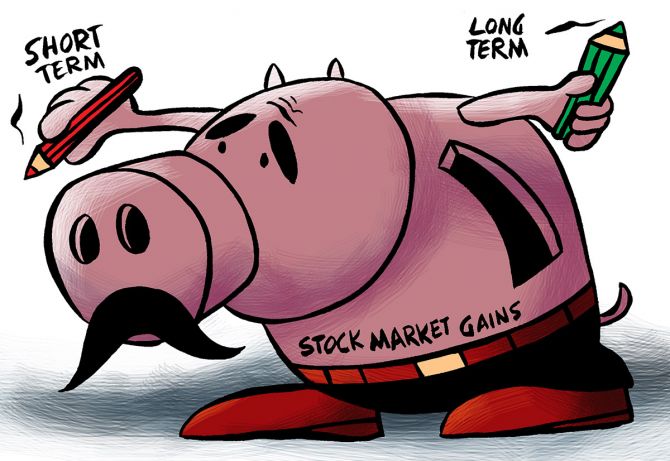They will not be followed by analysts and no fund manager can buy such small companies with low trading liquidity.
Large companies, those that are talked about in the media and tracked on social media, have already been discovered. They won't lead to extraordinary gains, Debashish Basu points out.

For equity investors, certain stocks, properly selected, can be ladders to riches.
While banks are paying you 6-7 per cent per annum, every few years a handful of stocks can go up 100 per cent or more.
Over 10 years some stocks can go up manifold.
Here is the data from the past decade of value creation (2013-2022 period) by listed companies.
After applying some filters such as liquidity and trading frequency, the following 10 companies have emerged as the highest value creators: Tanla Platforms, Paushak, Shivalik Bimetal Controls, Vidhi Specialty Food Ingredients, Alkyl Amines Chemicals, KEI Industries, HLE Glascoat, Fineotex Chemical, Tata Elxsi, and Uno Minda.
How well have these companies done?
From an adjusted price of Rs 5.12 in 2013, Tanla Platforms went up to Rs 946 (average price of 2022), which is a stupendous rise of 189 times.
Paushak went up 130 times. Shivalik Bimetal was up 126 times over the past decade.
What causes certain stocks to rally in this insane fashion when the best of Indian companies cannot deliver more than a low double-digit return?
We have been doing this annual compilation for the last 16 years.
Here are our observations:
1. Starting valuations
This is the most important factor.
All stocks that have created enormous shareholder value were available at exceptionally low valuations in 2013, partly because the stock market was in the doldrums.
KEI Industries was valued at a throwaway price-to-earnings (PE) ratio of 4.
Paushak was valued at a PE of 2.8.
The PE of Alky Amines was 6. Vidhi Specialty was valued at a PE of 3 and Fineotex Chemical had a PE of 4.
A very low valuation is the springboard for exceptional value creation.
2. Profit bursts
All these companies had broken into a sudden sprint, at some stage. That was the time to latch on to them.
Shivalik's net profit, which was Rs 7 crore-Rs 9 crore for four years between 2017 and 2020, suddenly jumped to Rs 19 crore in 2021 and Rs 26 crore the next year.
The net profit of Fineotex Chemical first jumped from Rs 16 crore in 2015 to Rs 28 crore in 2016, and continued to rise steadily every year until March 2021.
After this it jumped 20 per cent and again by 75 per cent the following year, putting it among the top gainers on the back of these two years of big profit growth.
Alkyl Amines, a research and development-focused specialty chemicals manufacturer, reported a net profit of Rs 85 crore-Rs 95 crore for four years between March 2014 and 2017.
In March 2018, the profit shot up to Rs 118 crore, but this was nothing compared to what was to follow.
Profit jumped 39 per cent the next year, 56 per cent in March 2020 and 67 per cent the year after. The stock naturally skyrocketed.
UNO Minda, one of the top 10 value creators, reported a stunning 34 per cent compound annual growth rate (CAGR) in net profit over the past 10 years.
KEI Industries, another top value creator, which makes mundane products like electrical cables and wires, reported a 10-year CAGR of 31 per cent in net profit, leading to growth in shareholder value at a CAGR of 57 per cent over 10 years.
For mind-boggling gains, we must look for a massive jump in profits.
3. Small size
All these companies were small in 2013.
Tanla's turnover was just Rs 117 crore in 2013.
Last year, it was over Rs 3,200 crore.
Paushak's turnover was just Rs 51 crore a decade ago.
Shivalik Bimetal had a turnover that was even smaller -- just about Rs 30 crore.
If you are looking for multibaggers, look for smaller companies.
They will not be followed by analysts and no fund manager can buy such small companies with low trading liquidity.
Large companies, those that are talked about in the media and tracked on social media, have already been discovered. They will not lead to extraordinary gains.
4. Hot themes
This factor is not necessary but, if present, helps inflate valuation.
Shivalik Bimetal is a good company, but return on investment is not extraordinary.
But being part of a hot sector, an investment theme or a meme, helped increase its valuation enormously.
In fact, there are multiple themes in Shivalik's case.
It is utilising the PLI (performance-linked incentive) scheme to expand into electric vehicles (EV), charging stations, intelligent battery systems, and solar energy farms with battery storage.
PLI, EV, and green energy are all hot themes.
Tanla, which is into messaging, e-commerce, and e-payments, rode the wave of market interest in technology companies, and the themes of distributed ledger (that backs bitcoin) and 'communications as a platform' in 2021.
With the benefit of hindsight, all these are great lessons -- especially the combination of low valuation and high profit growth -- but finding and profiting from these situations is not as easy as it looks.
For one, stock prices are influenced both by external factors and internal ones.
For instance, multibaggers often fall sharply due to external events, sowing doubts even among the most die-hard fans. Staying the course is tough.
Second, a vastly improved business performance looks obvious with the benefit of hindsight, but only revealed over time.
Even the managements of these companies are often not sure how the future would unfold.
The best course of action for investors is to look for a combination of improved financial results combined with a reasonably low valuation and hope to ride the journey of such extraordinary value creators.
Debashish Basu is editor of moneylife.in












 © 2025
© 2025